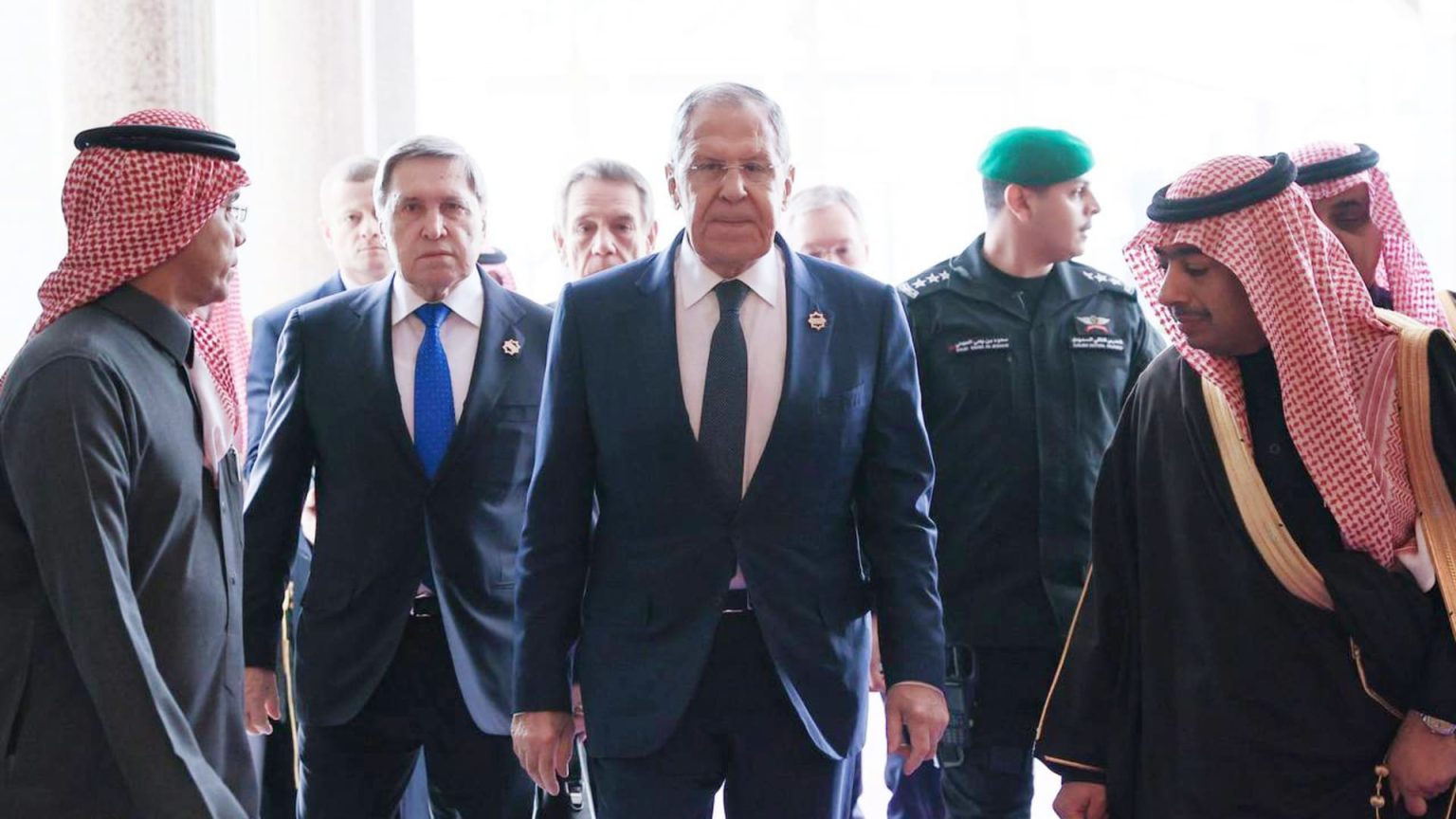On February 18, 2025, significant diplomatic discussions took place in Riyadh, Saudi Arabia, between U.S. and Russian officials, marking their first formal meeting in years. U.S. Secretary of State Marco Rubio and Russian Foreign Minister Sergei Lavrov led the talks aimed at addressing the ongoing war in Ukraine. The meeting signals a potential thaw in U.S.-Russian relations, coinciding with President Donald Trump‘s recent announcement of negotiations to seek an end to the conflict that has lasted for three years.
| Article Subheadings |
|---|
| 1) The Historic Meeting of U.S. and Russian Officials |
| 2) Assessing the Potential for Peace |
| 3) Exclusion of Ukraine and European Allies |
| 4) Economic Implications of the Talks |
| 5) The Road Ahead: Future Diplomatic Efforts |
The Historic Meeting of U.S. and Russian Officials
The recent meeting in Riyadh serves as a notable pivot in U.S.-Russia relations, marking the first formal encounter between senior diplomats from both countries since January 2022. This dialogue holds historical significance, as it attempts to rekindle a communication channel between the two nations that have been strained for years, especially following Russia’s invasion of Ukraine. The high-profile delegation included U.S. Envoy Steve Witkoff and National Security Adviser Mike Waltz on The U.S. side, and Yuri Ushakov, foreign policy adviser to Russian President Vladimir Putin, joined Lavrov in Moscow’s delegation.
Assessing the Potential for Peace
The discussions lasted more than four hours and aimed to lay the groundwork for future negotiations to resolve the conflict in Ukraine. While the atmosphere was cautiously optimistic, U.S. State Department Spokesperson Tammy Bruce emphasized that one meeting alone would not suffice for lasting peace. “One phone call followed by one meeting is not sufficient to establish enduring peace. We must take action, and today we took an important step forward,” she articulated. The meeting’s purpose was rooted in determining the seriousness of both parties regarding future peace talks, particularly concerning the ongoing violence in Ukraine.
Exclusion of Ukraine and European Allies
Ukrainian officials were notably absent from the discussions, raising concerns among allied European nations about the legitimacy of any agreements reached. Ukrainian leaders have previously stated they will not endorse any peace deal that subverts their national interests. European leaders held an emergency meeting in Paris, focusing on defense spending, yet failed to reach consensus on potential troop deployments to Ukraine. The delicate situation reveals a fragile landscape where key stakeholders are sidelined, and the lack of Ukrainian representation has prompted skepticism regarding the efficacy of proposed solutions.
Economic Implications of the Talks
The meeting not only addressed military concerns but also the economic ramifications of the prolonged conflict. Kirill Dmitriev, head of Russia’s sovereign wealth fund, participated in the talks, highlighting the economic cost of strained ties between the U.S. and Russia. Dmitriev stated that U.S. businesses had incurred losses around $300 billion following their exit from the Russian market, underlining the pressing need for economic restoration alongside diplomatic efforts. He suggested that renewed collaboration might lead to beneficial outcomes for both nations, given the extensive economic toll imposed by the conflict.
The Road Ahead: Future Diplomatic Efforts
Following the meeting in Riyadh, indications suggest that separate negotiations would soon commence between teams from both the U.S. and Russia. This will likely include ongoing assessments of Ukraine’s standing and the legitimacy of its leadership, which has been under scrutiny by Russian officials. Moving forward, both nations remain challenged by the need for inclusive discussions that involve Ukraine and European partners to produce a sustainable resolution to the decades-long conflict in the region. As the international community watches closely, the diplomatic repercussions of this meeting will likely reverberate far beyond the immediate arena of U.S.-Russia relations.
| No. | Key Points |
|---|---|
| 1 | The U.S. and Russia held their first formal meeting in years to discuss Ukraine. |
| 2 | The dialogue is intended to pave the way for future discussions on peace efforts. |
| 3 | Ukraine was excluded from the discussions, raising concerns about the legitimacy of any outcomes. |
| 4 | Economic implications of the conflict were highlighted regarding U.S. business losses in Russia. |
| 5 | Future Russian and U.S. negotiations are anticipated, with expectations for more inclusive discussions. |
Summary
The recent meeting in Saudi Arabia stands as a crucial step in a complicated dialogue between the United States and Russia regarding the ongoing conflict in Ukraine. As parties begin to broach the possibility of peace, the absence of Ukraine and European allies from discussions creates an added layer of complexity. Moving forward, successful resolution will hinge on inclusive negotiations that address both military and economic challenges at hand, shaping the future of international relations in the context of this prolonged crisis.
Frequently Asked Questions
Question: What was the significance of the meeting between U.S. and Russian officials?
The meeting marks the first formal discussion between top U.S. and Russian diplomats in over three years, aiming to pave the way for peace negotiations regarding the conflict in Ukraine.
Question: Why were Ukrainian officials absent from the talks?
Ukrainian leaders were excluded from the discussions, which has raised concerns about the legitimacy and effectiveness of any agreements made without their involvement.
Question: What economic consequences were addressed in the meeting?
The economic ramifications of the conflict were highlighted, including significant losses incurred by U.S. businesses in Russia, and a call for economic restoration efforts as part of future negotiations.


